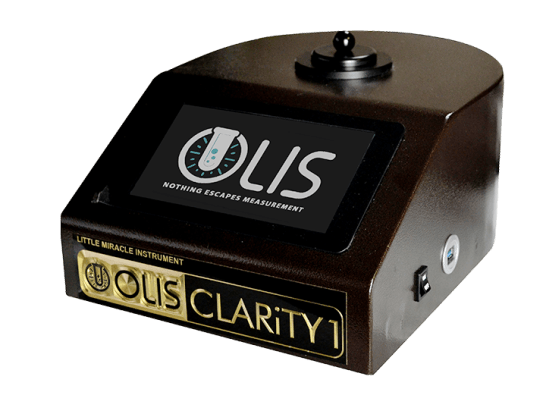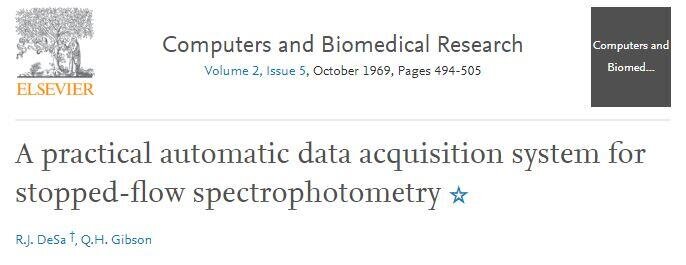The 4-Minute Rule for Uv/vis/nir
The 4-Minute Rule for Uv/vis/nir
Blog Article
Some Known Incorrect Statements About Uv/vis
Table of ContentsIndicators on Circular Dichroism You Should KnowFacts About Uv/vis RevealedSome Known Factual Statements About Circularly Polarized Luminescence Some Ideas on Spectrophotometers You Need To Know5 Simple Techniques For Uv/vis

Spectrophotometry is a tool that hinges on the quantitative analysis of molecules depending on how much light is absorbed by colored compounds.
5 Easy Facts About Uv/vis/nir Shown
A spectrophotometer is commonly utilized for the measurement of transmittance or reflectance of services, transparent or nontransparent solids, such as sleek glass, or gases. Lots of biochemicals are colored, as in, they take in noticeable light and for that reason can be measured by colorimetric procedures, even colorless biochemicals can frequently be converted to colored compounds appropriate for chromogenic color-forming responses to yield substances suitable for colorimetric analysis.: 65 Nevertheless, they can likewise be designed to determine the diffusivity on any of the listed light ranges that generally cover around 2002500 nm using different controls and calibrations.
An example of an experiment in which spectrophotometry is utilized is the decision of the stability constant of an option. A particular chain reaction within a solution might occur in a forward and reverse instructions, where reactants form items and products break down into reactants. Eventually, this chain reaction will reach a point of balance called an equilibrium point.
An Unbiased View of Spectrophotometers
The quantity of light that travels through the solution is a sign of the concentration of particular chemicals that do not enable light to pass through. The absorption of light is because of the interaction of light with the electronic and vibrational modes of particles. Each type of molecule has a private set of energy levels related to the makeup of its chemical bonds and nuclei and hence will take in light of particular wavelengths, or energies, leading to distinct spectral residential or commercial properties.
They are commonly utilized in many markets including semiconductors, laser and optical manufacturing, printing and forensic evaluation, as well as in labs for the study of chemical compounds. Spectrophotometry is typically utilized in measurements of enzyme activities, determinations of protein concentrations, determinations of enzymatic kinetic constants, and measurements of ligand binding reactions.: 65 Eventually, a spectrophotometer is able to determine, depending on the control or calibration, what compounds are present in a target and exactly how much through calculations of observed wavelengths.
This would come as a solution to the previously created spectrophotometers which were unable to absorb the ultraviolet properly.
Circularly Polarized Luminescence Fundamentals Explained
It would be found that this did not provide satisfying outcomes, for that reason in Model B, there was a shift from a glass to a quartz prism which allowed for better absorbance results - circularly polarized luminescence (https://www.wattpad.com/user/olisclarity1). From there, Design C was born with a change to the wavelength resolution which ended up having three systems of it produced
It irradiates the sample with polychromatic light which the sample soaks up depending on its residential or commercial properties. It is transmitted back by grating the photodiode array which finds the wavelength area of the spectrum. Ever since, the development and execution of spectrophotometry devices has actually increased tremendously and the original source has ended up being one of the most innovative instruments of our time.

Facts About Spectrophotometers Uncovered
The grating can either be movable or fixed.
In such systems, the grating is fixed and the strength of each wavelength of light is determined by a various detector in the array. When making transmission measurements, the spectrophotometer quantitatively compares the portion of light that passes through a recommendation service and a test solution, then electronically compares the strengths of the 2 signals and computes the percentage of transmission of the sample compared to the referral standard.

Report this page